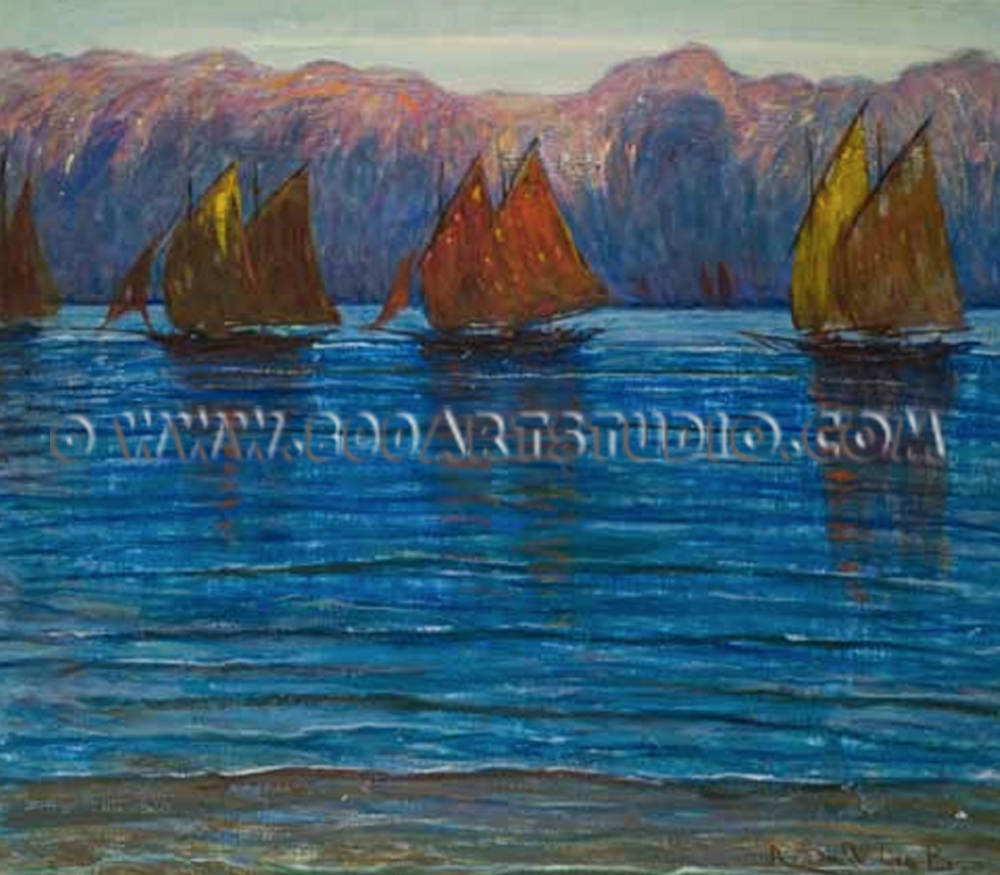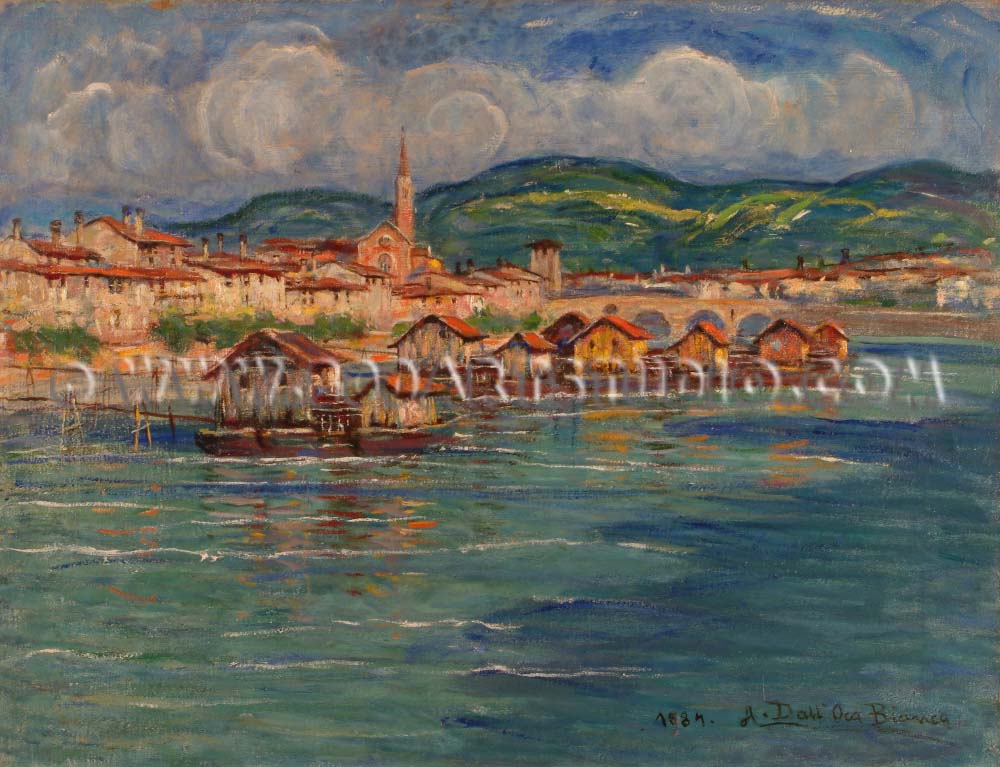Angelo Dall’Oca Bianca was born in 1858 in Verona to a family from a humble background. In his biography written in 1897, Angelo describes his childhood until the age of fifteen as being spent in the streets of Verona and not at school. Then, because of the early death of his father he started work doing several short-term contract jobs.
At the same time he showed a talent for drawing and painting and, helped by the sculptor Ugo Zannoni and by the director himself, Napoleone Nani, he succeeded in entering the Accademia di Belle Arti Cignaroli di Verona where he studied for two years before going to the Accademia di Venezia where he very probably studied the optional courses of nude drawing and got to know the artist Giacomo Favretto who had a great influence on the boy.
1876 saw his first appearance at the Esposizione della Società di Belle Arti di Verona and in 1881 he was successful in selling three works at the Esposizione Nazionale di Milano. In 1882 he went to Rome where he came into contact with artists and writers such as Carducci and D’Annunzio, was introduced to Queen Margherita who commissioned several paintings from him on more than one occasion.
As a consequence of the terrible flooding in Verona in September 1882, Angelo returned to his hometown and felt the urge to depict those dramatic events before they faded from his memory. Maybe this disaster strengthened the bond with his hometown that for his entire life was a continuous and great source of inspiration for his art.
He took part in the 1883 Esposizione Internazionale di Belle Arti di Roma together with other artists. In 1884 he was present at the Esposizione di Torino and the Internazionale di Barcellona where he won the first prize. In 1886 Angelo Dall’Oca Bianca held a personal exhibition in Vienna and showed at Antwerp. The following year he was appointed an associate member of the Accademia di Belle Arti Cignaroli and of the Società di Belle Arti di Verona.
Right from the beginning of the new century he continued to exhibit both in Italy and in Europe and also at the Chicago World Exhibition of 1893. In 1900 he was awarded the gold medal at the Esposizione Universale, Paris with the painting “Gli amori delle anime” (Passions of the Spirits). After eighteen years’ of absence from exhibitions in Verona, his birth town, he returned in 1908 for the 50th anniversary of the founding of the Società delle Belle Arti and the Paris gold medal painting was purchased by the Verona town council.
In 1912, at the 10th Venice Biennial, he had to defend his art from those who thought it outdated in comparison with the popular avant-garde movement and in 1915 when he was again invited to the Venice Biennial he at first accepted only to later refuse. Following this episode he refused all invitations to exhibit his work in public although he continued to paint scenes of all parts of Verona, mainly depicting those areas that were the poorest and shabbiest.
He loved Verona so much that he very probably began to think about the idea of a centre for the destitute. This project took shape near S. Zeno and was inaugurated in 1939. The Villaggio Dall’Oca was built as a result of the artist’s donations and was enlarged in 1941 with funds left in his will as well as through the rest of his property that he left to the Verona Town Council.
Written by: Cecilia Iacopetti – Translated by: Catherine Biggerstaff
© Studio d’Arte dell’800



